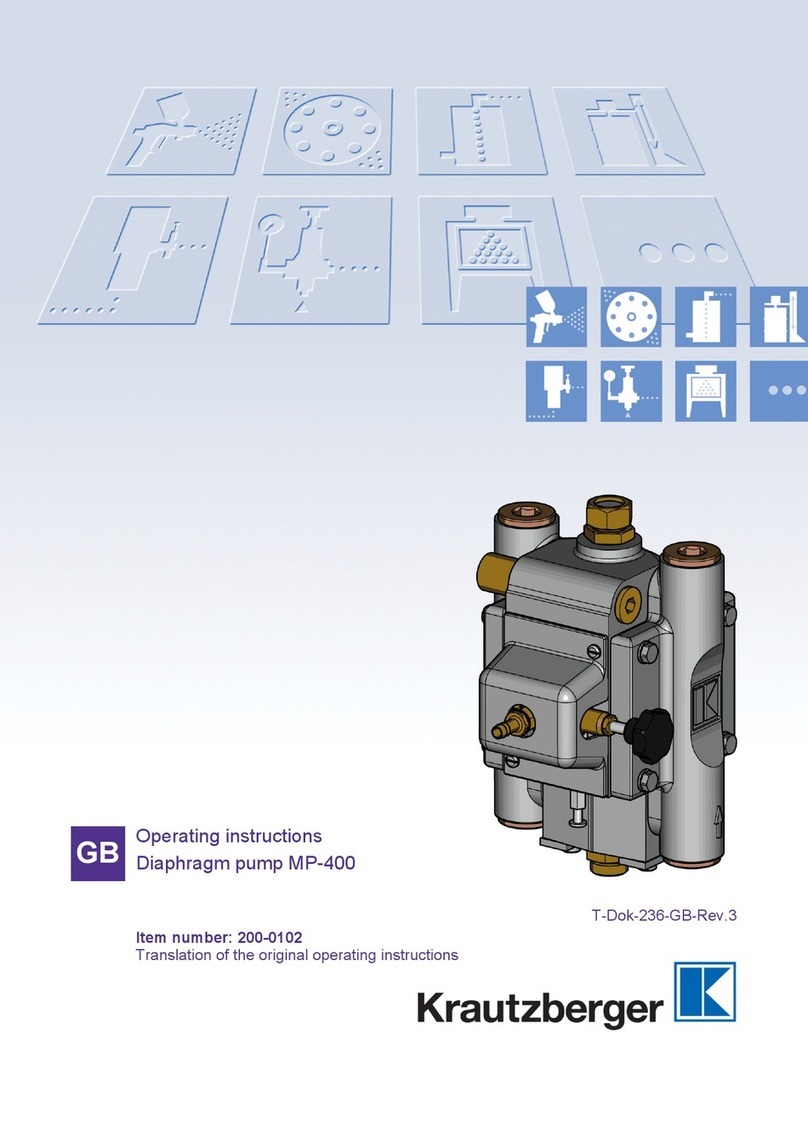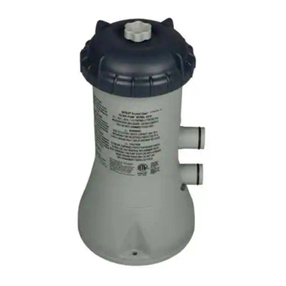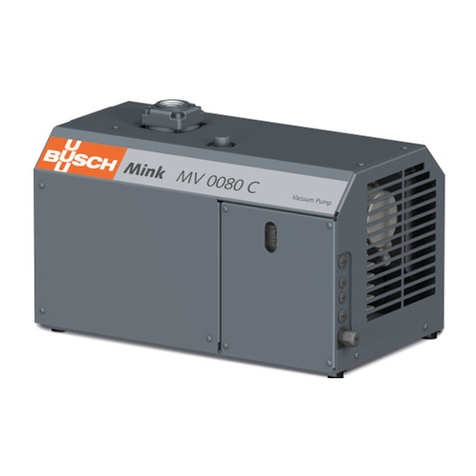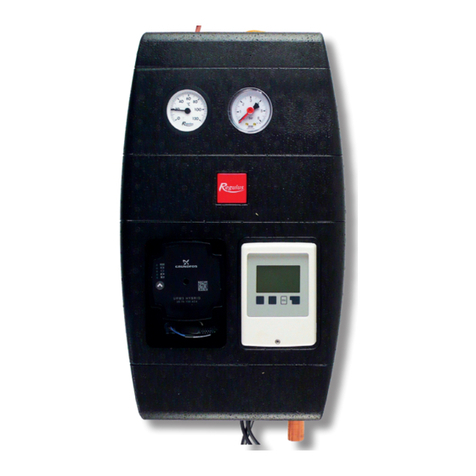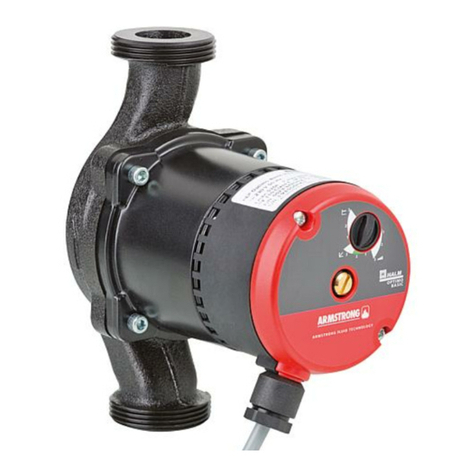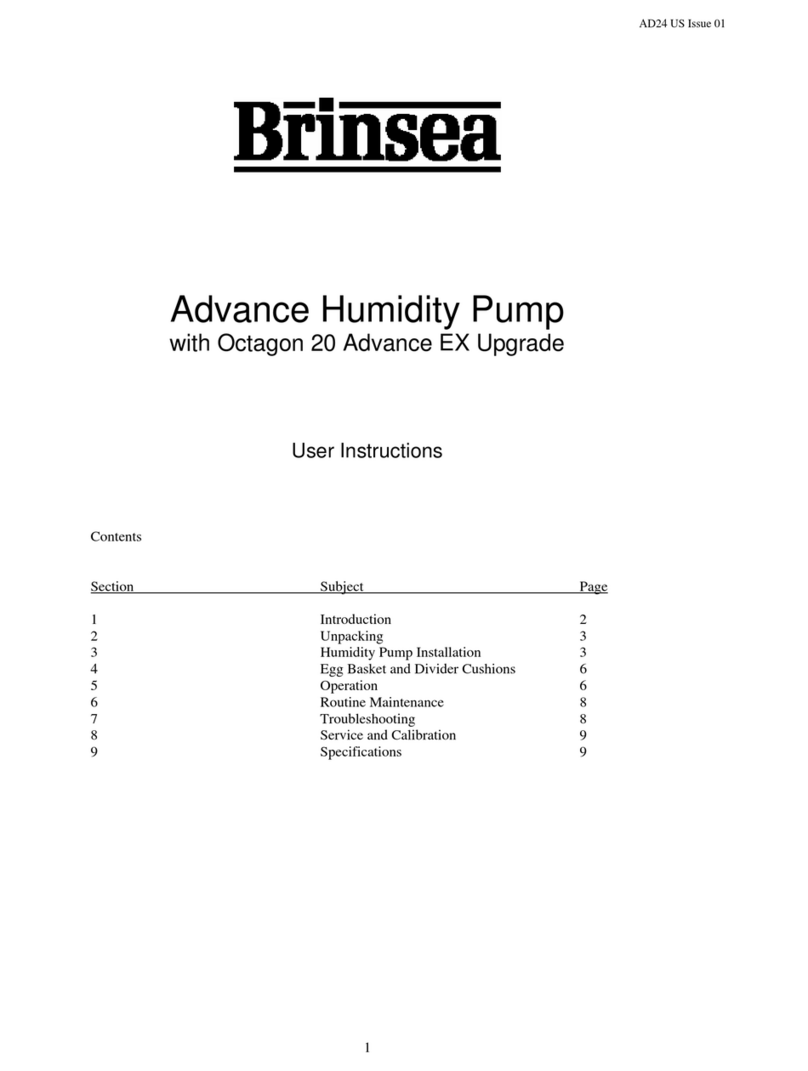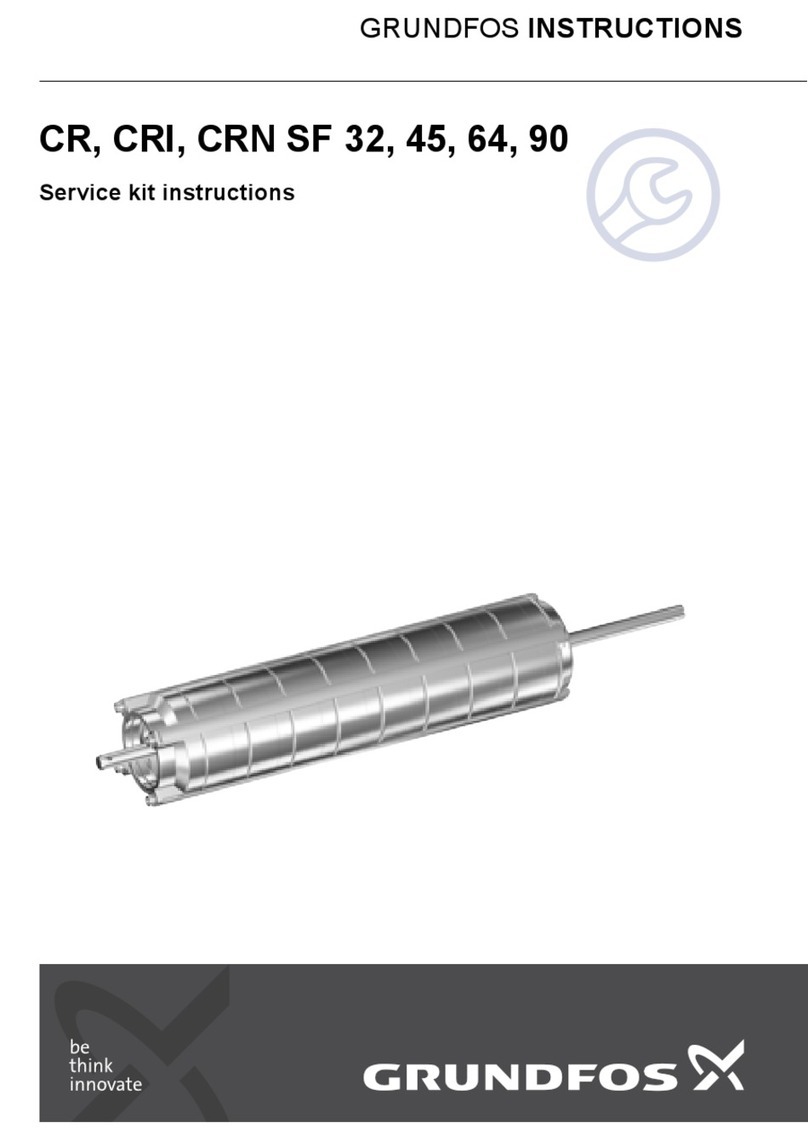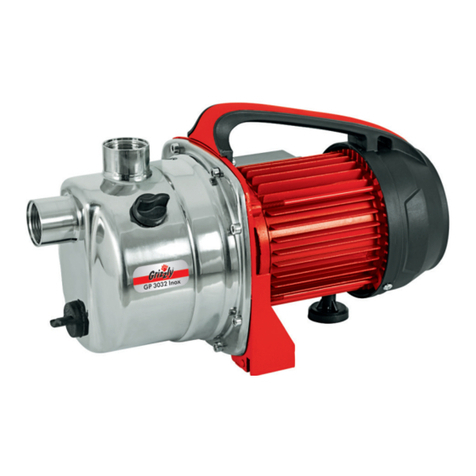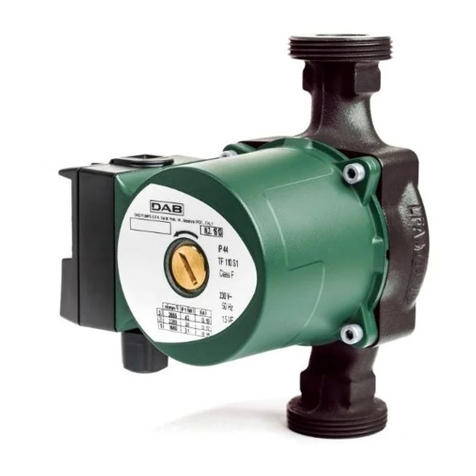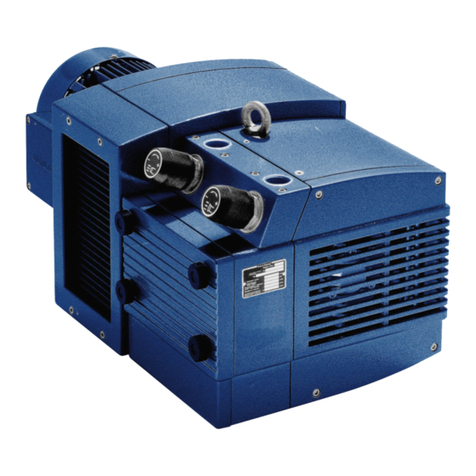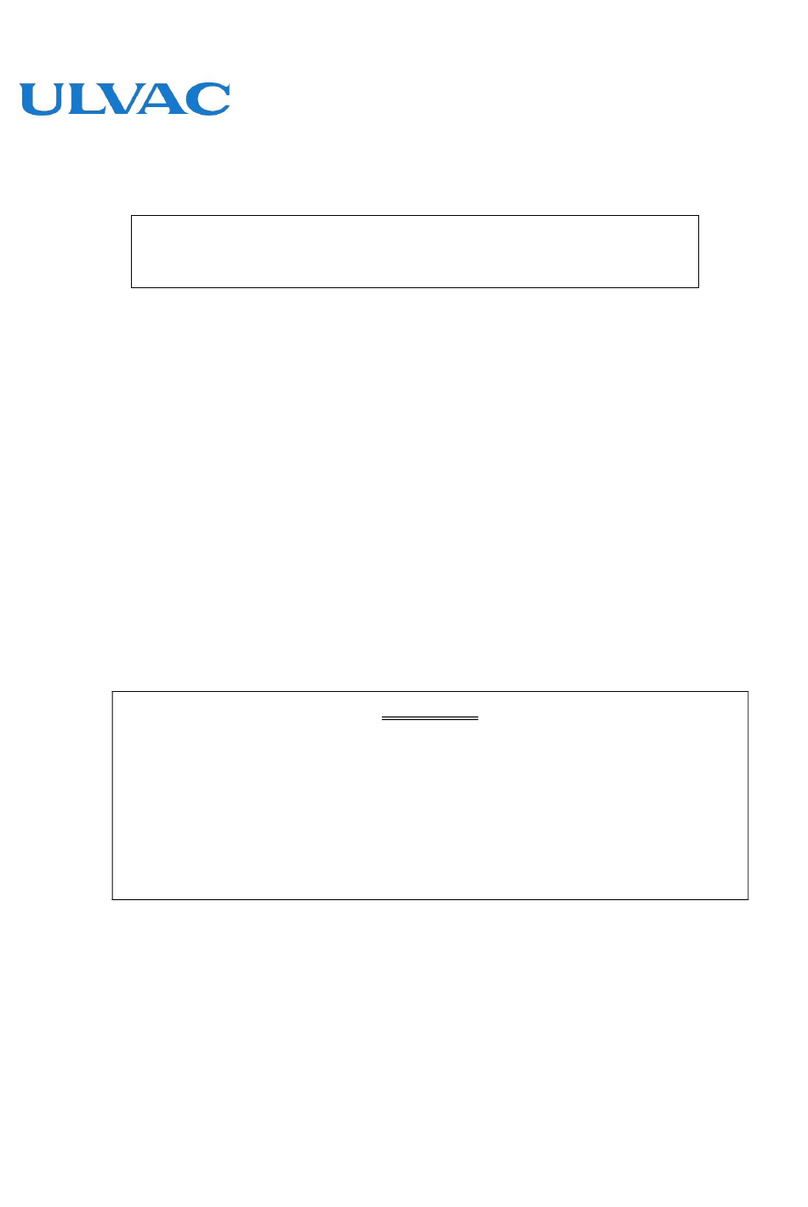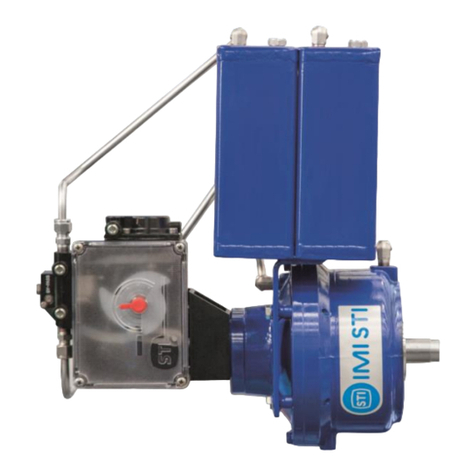Geotech Bladder Pumps User manual

Rev 02/17/2015 Part # 21150035
Geotech
Bladder Pumps
Installation and Operation Manual


1
Table of Contents
CHAPTER 1: SYSTEM DESCRIPTION ........................................................................... 2
CHAPTER 2: SYSTEM INSTALLATION ............................................................................ 6
CHAPTER 3: SYSTEM OPERATION................................................................................ 8
CHAPTER 4: SYSTEM MAINTENANCE......................................................................... 11
CHAPTER 5: SYSTEM TROUBLESHOOTING............................................................... 17
CHAPTER 6: SYSTEM SPECIFICATIONS..................................................................... 18
CHAPTER 7: REPLACEMENT PARTS LIST.................................................................. 19
NOTES............................................................................................................................. 27
THE WARRANTY............................................................................................................. 29

2
NOTE
DOCUMENTATION CONVENTIONS
This document uses the following conventions to present information:
CAUTION
A note icon indicates NOTE information. Notes provide
additional or supplementary information about an activity or
concept.
An exclamation point icon indicates a WARNING of a situation
or condition that could lead to personal injury or death. You
should not proceed until you read and thoroughly understand
the WARNING message.
WARNING
A raised hand icon indicates CAUTION information that relates
to a situation or condition that could lead to equipment
malfunction or damage.You should not proceed until you read
and thoroughly understand the CAUTION message.

3
Chapter 1: System Description
Function and Theory
Geotech’s pneumatic Bladder Pumps operate with a unique action, ideal for both gentle
low-flow sampling and high flow rate purging. Timed on/off cycles of compressed air
alternately squeeze the flexible bladder to displace water out of the pump to the surface
and then exhaust allowing the pump to refill.
Fluid enters and fills the pump through the fluid inlet check valve at the bottom of the
pump body via hydrostatic pressure. Once fill, compressed air enters the space between
the bladder and the interior of the pump housing, squeezes the bladder, and pushes the
fluid to the surface (see figure 1). Driven by the BP Controller or Geocontrol PRO, this
cycle automatically repeats.
Compressed air does not contact the sample! The bladder prevents contact between the
pump drive air and the sample.
Figure 1 –Bladder Pump Operation

4
System Components
A Geotech Bladder Pump consists of three main parts (see figure 2):
- The Bladder Cartridge Assembly
- Pump Housing
- Intake Screen
*Optional: Drop Tube Intake Assembly
Bladder Cartridge Assembly
Geotech’s 1.66” (4 cm) Bladder Cartridge Assembly (for 18”/46 cm and 36”/91 cm lengths)
is factory assembled and tested, and is designed to be field replaceable.
The .850” (2 cm) and .675” (1.7 cm) Bladder Cartridge’s are easily replaceable see,
Chapter 4: System Maintenance.
Pump Housing
The bladder pump housing is constructed of electro polished 316 Stainless Steel. The
housing components consist of threaded top and bottom caps, and the housing tube.
Viton O-rings provide the high pressure seals between the end caps and the housing tube.
Intake screen
The intake filter screen is constructed of 316 Stainless Steel and is easily removable for
field maintenance. The intake filter screen is intended to protect and extend the life of the
bladder material (see warranty).
*Optional: Drop Tube Intake Assembly
An optional drop tube can be used to sample from depths below the specified maximum
sampling depth. The drop tube assembly connects a remote intake to the pump through a
tube connected to the pump inlet. The intake depth can be any custom length of tubing.
The pump assembly itself must still be submerged below the water level. This means the
depth to water cannot exceed the maximum pumping depth of the pump.
Be sure to read and understand your portable generator and/or
portable air compressor user manual for proper installation and
operation and Earth grounding instructions. If using portable
compressed gas tanks, be sure to exercise proper caution, use safety
protection devices as outlined by the supplier, and observe any
additional safety requirements mandated by local jurisdiction.

5
Figure 2 –Basic* Bladder Pump Assembly
*Example above is based on 1.66”/4 cm configuration

6
Chapter 2: System Installation
The user must determine site specific parameters such as water level, recharge rate and
adherence to low flow purging guidelines.
Pump Tubing Lines
Geotech’s Bladder Pumps are engineered for easy installation and use. Dedicated
Bladder Pumps are available with the tubing attached. Well identifications (supplied by
customer) are located on tags connected to the tubing, and on the tubing bags.
If not pre-attached, upon reaching the well head, connect the air line tubing to air line
connection at the top of the Bladder Pump (see figure 3).
For the 1.66” (4 cm) pumps, the air line is smaller than the discharge line. For the .675"
(1.7 cm) and .850" (2 cm) diameter pumps, both air and discharge lines are the same size.
The letter “A” has been stamped near the air line hose barb on the top of the pump.
Next attach the discharge line to the dischagrge line connection at the top of pump (see
figure 3).
Figure 3 –Pump Head
Failure to attach air and fluid lines to the appropriate ports could
result in damage to the bladder.

7
Safety Cable
Before deploying any sampling pump, secure a safety cable from an anchoring point at or
near the well head to the top of the pump.
The optional Bladder Pump Hanger is attached to the Quick Link on the safety cable.
Carefully lower the Bladder Pump into the well using the Reverse Coil Method to avoid
kinking, until the desired depth is achieved or until the well cap seats.
Reverse Coil Method
When lowering the pump into the well it is important to reverse the natural bend of the
coiled tubing so that the tubing will straighten out as it is lowered (see figure 4). As the
pump and tubing are lowered into the well, the direction of the bend should be reversed
from the direction in which it is coiled. If the tubing is allowed to uncoil naturally and the
natural bend not interrupted, the tubing will continue its coil into the well. Using the reverse
coil method will avoid hang-ups or difficulty in lowering the pump into the well, especially
when the well is not completely vertical, or has come out of alignment for any reason.
Optional Drop Tube Assembly
If a Drop Tube Intake assembly is employed, a third tubing line is necessary to connect
from the bottom of the bladder pump to the top of the Drop Tube.
For deployment of optional Drop Tube Assembly attach desired length of drop tube to the
intake hose barb and hose barb on bottom of pump. Send the drop tube intake down the
well followed by the drop tube tubing, then the pump and finally the air and fluid discharge
lines.
Figure 4 –Reverse Coil Method

8
Chapter 3: System Operation
Bladder Pump Operation
Fluid enters the pump through the fluid inlet check valve at the bottom of the pump body
via hydrostatic pressure. The pump MUST be submerged to operate. The bladder then
fills with fluid. Compressed air enters the space between the bladder and the interior of the
pump housing. The intake check valve closes and the discharge check valve (top) opens.
Compressed air squeezes the bladder, pushing the fluid to the surface. The discharge
check valve prevents back flow from the discharge tubing.
Selecting an Air Source
Air consumption depends on the volume of tubing and the size of deployed Bladder Pump.
Follow the general guidelines and examples below to calculate the air consumption for
specific sampling configurations.
Volume of Tubing
TUBING LENGTH
TUBE I.D.
1 ft/
0.3 m
10 ft/
3 m
50 ft/
15 m
100 ft/
30 m
250 ft/
76 m
500 ft/
152 m
0.17 in/
0.43 cm
0.3 in³/
5 cm³
3 in³/
50 cm³
15 in³/
246 cm³
30 in³/
492 cm³
75 in³/
1230 cm³
150 in³/
2460 cm³
0.25 in/
0.64 cm
0.6 in³/
10 cm³
6 in³/
100 cm³
30 in³/
492 cm³
60 in³/
984 cm³
150 in³/
2460 cm³
300 in³/
4920 cm³
Volume of Bladder Pumps
BP DIAMETER
BP LENGTH
VOLUME (in³)
1.66 in/
4 cm
36 in/
91 cm
78 in³/
1278 cm³
1.66 in/
4 cm
18 in/
46 cm
39 in³/
640 cm³
0.85 in/
4 cm
18 in/
46 cm
10 in³/
164 cm³
0.675 in/
4 cm
18 in/
46 cm
6 in³/
100 cm³
Calculation guideline: Volume of Tubing (in³/cm³)
+ Volume of Bladder Pump (in³/ cm³)
= Air Consumption per cycle (in³/ cm³)

9
If planning to use an air compressor, use one with a reserve tank to insure proper air
supply to the pump. If using a Nitrogen Tank, see figure 5 for Nitrogen Tank Volume vs.
Bladder Pump consumption.
Determining PSI
Determine the air pressure needed to operate the Bladder Pump based on the length of
the air supply line to the pump (well depth).
Use the simplified formula:
0.5 PSI (per foot) + 10 PSI (to account for tubing friction) = required PSI
0.12 bar (per meter) + 0.7 bar (to account for tubing friction) = required bar
As mentioned above, the additional 10 PSI/ 0.7 bar is to account for the pump itself and
friction loss along the airline tubing. When the length of the airline is 50 ft./15 meters or
less, there is no need for the additional pressure.
To determine minimum operating pressures for the specific Bladder Pump model you are
using, consult the pump’s specifications. Typically, the minimum operating pressure will be
5 PSI/ 0.4 bar above static head.
Flowrates
Flowrates depend on pump size and pump depth. For example, a large pump at shallow
depths will produce the most flow, and a small pump at maximum depths will product the
least amount of flow. Speak with a Geotech representative to determine the best
configuration to meet sampling needs.
If using a nitrogen tank as an air source, see figure 5, Nitrogen Tank Volume vs. Bladder
Pump consumption.
For determining the number of cycles it will take to receive sample fluid at the well head,
see figure 6, Cycles vs. Depth.
The formulas stated above are not absolute, and are meant to
provide baseline information.

10
Figure 5 –Tank Volume vs. BP Consumption

11
Figure 6 –Cycles vs. Depth

12
Chapter 4: System Maintenance
Bladder Pump
As with any pump, scheduled or periodic maintenance should be performed, according to
your sampling program and specific site conditions. Generally, the more turbid or sandy
the water, the more maintenance and cleaning are required.
Replacement bladders, as well as other key components, can be found in Chapter 7:
Replacement Parts List.
Disassemble Bladder Pump per instructions, decontaminate or replace parts as needed,
then reassemble. Inspect all check balls for wear and replace as necessary. Inspect all O-
rings for splits or cracks and replace as necessary.
Replacing the Bladder Cartridge
1.66”/ 4 cm Models
Pull pump from the well, it is not necessary to remove the air and sample lines from the
pump. Take care, as the pump may be filled with fluid.
(Models w/screens) Using an allen wrench, remove the shoulder bolts from the intake
screen cap.
While holding pump body with your hand or with a strap wrench, use a spanner tool to turn
the lower head in a counter clockwise direction and remove (see figure 7). Pump head will
be very snug due to the high pressure O-ring seal. Once the seal is broken, the lower
head will turn very easily.
The internal bladder cartridge can now be removed for maintenance or replacement.
Gently tap the tube housing on a firm wood like surface until the cartridge drops from the
upper head seal. Reach into the tube with one or two fingers and pull the cartridge free.
For the 1.66”/ 4 cm models, rebuild the pump in the order it was disassembled.
Inspect O-rings and bladder for damage.
Replace if torn, ripped or excessively worn.

13
Figure 7 –1.66 BP Lower Cap Removal

14
.850 and .675 Models
Pull pump from the well, it is not necessary to remove the air and sample lines from the
pump. Take care, as the pump may be filled with fluid.
Remove the lower screen and housing by turning the housing in a counter clockwise
direction. Use your hand or a strap wrench.
Remove the lower PTFE compression ring by pulling off end of the internal center tube
assembly.
Pull the lower end of the bladder towards the middle of the internal center tube assembly
and remove O-ring from the lower end of the tube.
Remove the upper PTFE compression ring and slide the ring off of the end of the internal
center tube assembly.
Slide the bladder off of the internal center tube weldment assembly. The bladder can now
be replaced or serviced. Rebuild the pump in the order it was disassembled.
SS Check Ball must be inside
Intake Assembly.
The configuration shown may
damage pump.

15
To reassemble .850 and .675 Models:
Install O-ring to upper end of the center tube weldment assembly.
Slide bladder onto the center tube assembly and over the O-ring on the upper end of the
center tube assembly.
Be careful not to roll the O-ring when sliding the bladder over this end.
Slide a PTFE compression ring over the bladder and push down over bladder and upper
end of the center tube
With the upper end of the bladder secured by the PTFE compression ring, slide the
second compression ring over the bladder about midway down the assembly.

16
Slide the bladder up, beyond the bottom of the center tube assembly, exposing the lower
end of the center tube and install the O-ring into the groove on the lower end.
Slide the bladder back down over the O-ring being careful not to roll the O-ring.
Now slide the PTFE compression ring over the bladder until it seats flush with the bottom
of the center tube assembly.
Replace the outer housing. Be sure the outer housing is sealed against the upper cap.
Replace the bottom intake assembly by screwing it into the bottom of the pump. There
shouldn't be any gaps between the outer housing and top or bottom caps.

17
Chapter 5: System Troubleshooting
Problem: Air is cycling through controller but will not pump.
Solutions:
Discharge and Fill times are not set correctly. Check and adjust Discharge and
Fill cycle times (i.e. if Discharge time is too long or if Fill and Discharge time is
too short).
Possible compromise in air line tubing. Check air line pumps for leaks. If needed,
repair using compression union or replace tubing.
Check pump intake screen for blockage and clean as needed.
Problem: Controller is cycling but the pump stops producing water.
Solutions:
Check drawdown level of water in the well. Ensure the pump is fully submerged
and off of the bottom of the well.
Check psi at the regulator and adjust as necessary (see “Determining PSI” in
Chapter 3).
Check for kinks in the discharge line.
Check pump intake screen for obstructions.
Discharge time is too long or Fill time is too short; causes pressure build up in
pump, causing the pump not to fill.
Check power source, assure a strong reliable power supply. If using old or weak
battery, the control valves may not operate properly.
Problem: Getting air bubbles in sample line.
Solutions:
Overcharging pump. Reduce discharge cycle time so that discharge cycle ends
as fluid discharge trails off. Inspect pump for compromised bladder or o-rings.
Pump is being overpressurized. Reduce psi to what is necessary to overcome
pumping head.
Check discharge line for holes or kinks. Repair using compression union or
replace tubing.
Problem: Discharge line drains back into pump.
Solution:
Check valve is compromised. Remove Hosebarb on pump discharge outlet.
Check the check ball seat for debris. Clean and re-install.
If you are experiencing other problems than mentioned above, please call Geotech
Technical Support for immediate assistance, (800) 833-7958.

18
Chapter 6: System Specifications
1.66, 36"
1.66, 18"
0.850
0.675
Pump Housing
316 SS
316 SS
316 SS
316 SS
Pump Ends
316 SS
316 SS
316 SS
316 SS
Bladder Material
PTFE
PTFE
PTFE
PTFE
Bladder Collar
Material
PTFE
PTFE
PTFE
PTFE
Outer Diameter
1.66”
40 mm
1.66”
40 mm
.850"
21.6 mm
.675"
17 mm
Length w/ screen
38”
96.5 cm
20”
51 cm
18 5⁄ 8"
47 cm
18 3⁄4"
47.625 cm
Length w/o
screen
36”
91.4 cm
18”
45.7 cm
18”
45.7 cm
18”
45.7 cm
Weight
5 lbs.
1.9 Kg
2.5 lbs.
0.93 Kg
1.1 lbs.
500 g
0.83 lbs.
376 g
Volume/Cycle
21.1 oz.
625 mL
10.5 oz.
313 mL
1 oz.
29 mL
0.5 oz.
15 mL
Min. Well I.D.
2”
50 mm
2”
50 mm
1"
25 mm
.75"
19 mm
Min. Operating
Pressure
5 psi (ash)*
(.3 bar)
5 psi (ash)*
(.3 bar)
5 psi (ash)*
(.3 bar)
5 psi (ash)*
(.3 bar)
Operating
Pressure
10-450psi
0.7-31 bar
10-450psi
0.7-31bar
10-100 psi
0.7-7 bar
10-100 psi
0.7-7 bar
Proof Pressure
675 psi
46 bar
675 psi
46 bar
150 psi
10 bar
150 psi
10 bar
Burst Pressure
1350 psi
92 bar
1350 psi
92 bar
300 psi
20 bar
300 psi
20 bar
Max. Sampling
Depth
1000’
305 m
1000’
305 m
200'
61 m
200'
61 m
Tubing Size
Air Line
.17" ID x .25"
OD
(4 mm ID x 6
mm OD)
.17" ID x .25"
OD
(4 mm ID x 6
mm OD)
.17" ID x .25"
OD
(4 mm ID x 6
mm OD)
.17" ID x .25"
OD
(4 mm ID x 6
mm OD)
Discharge Line
0.25" ID x .375"
OD
(6 mm ID x
10MM OD)
0.25" ID x .375"
OD
(6 mm ID x
10MM OD)
.17" ID x .25"
OD
(4 mm ID x 6
mm OD)
.17" ID x .25"
OD
(4 mm ID x 6
mm OD)
*ash = above static head
Table of contents
Other Geotech Water Pump manuals
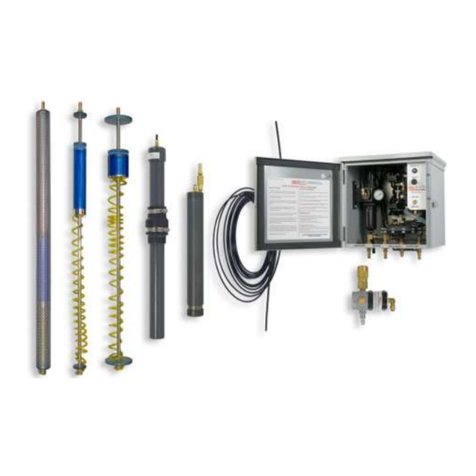
Geotech
Geotech Guzzler User manual

Geotech
Geotech enFUSION Cell 3500 User manual
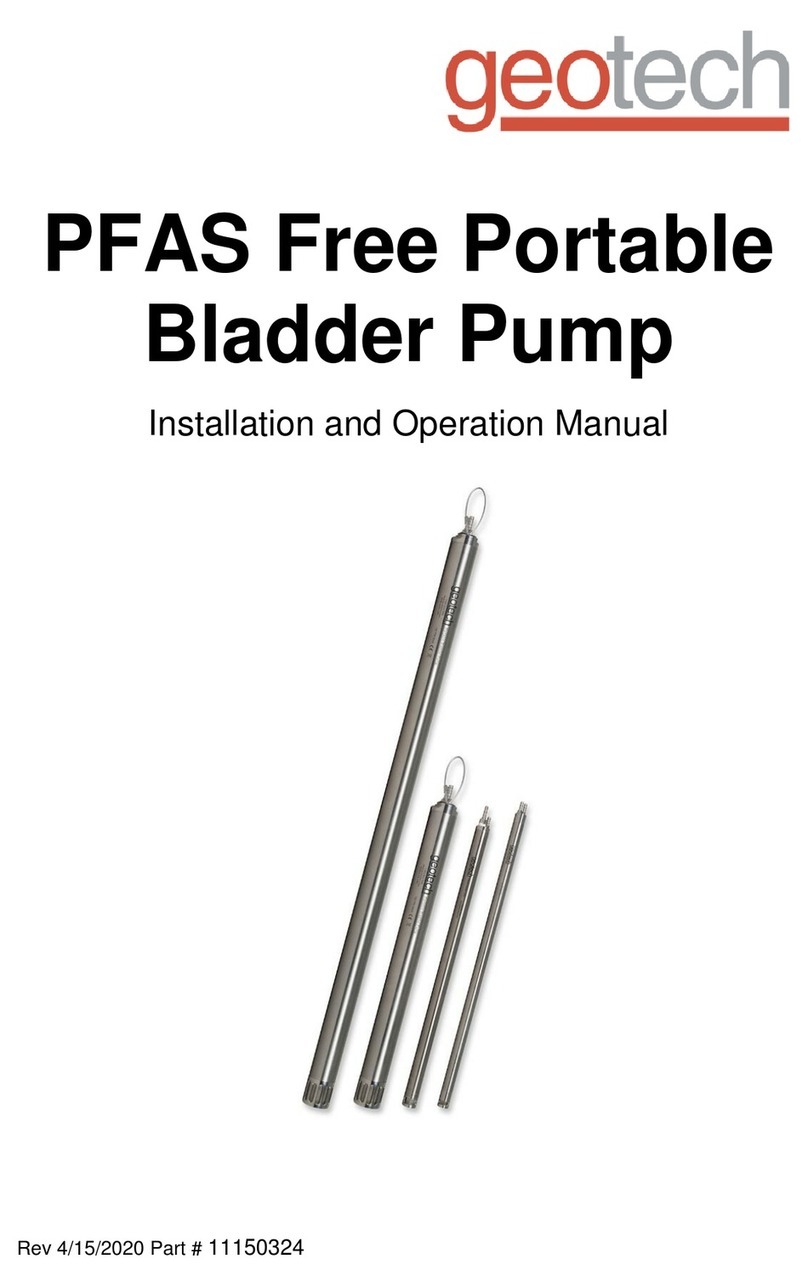
Geotech
Geotech PFAS Free Series User manual
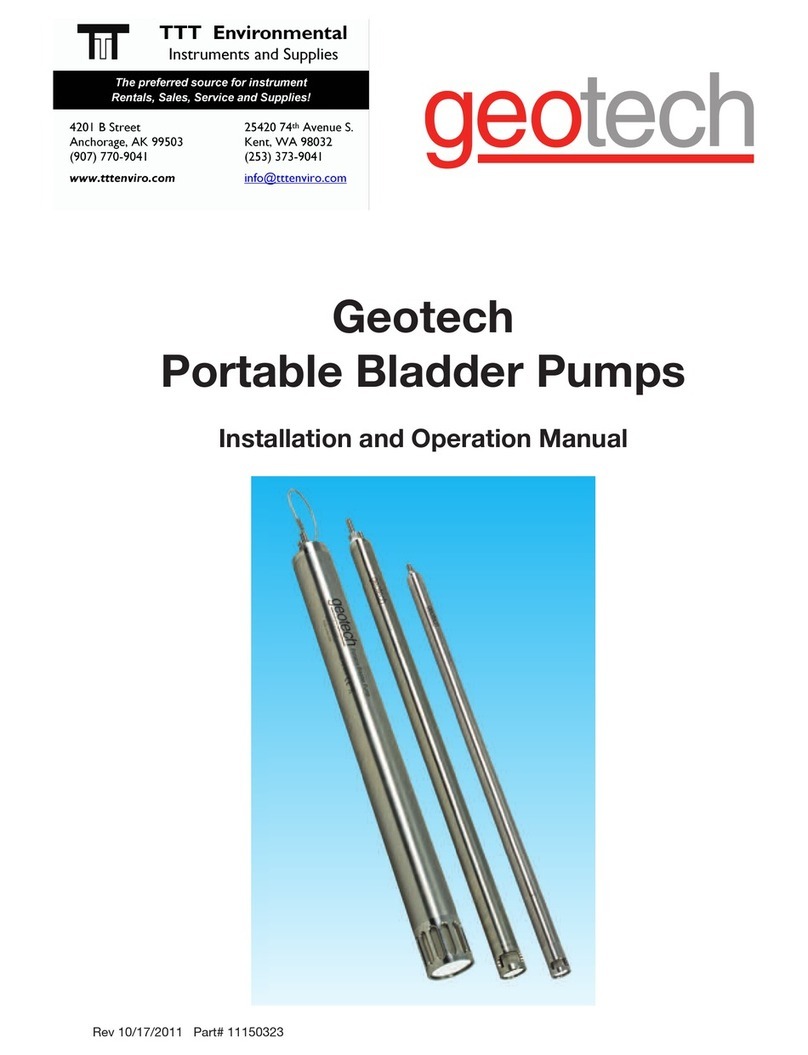
Geotech
Geotech 1.66 Reclaimer User manual
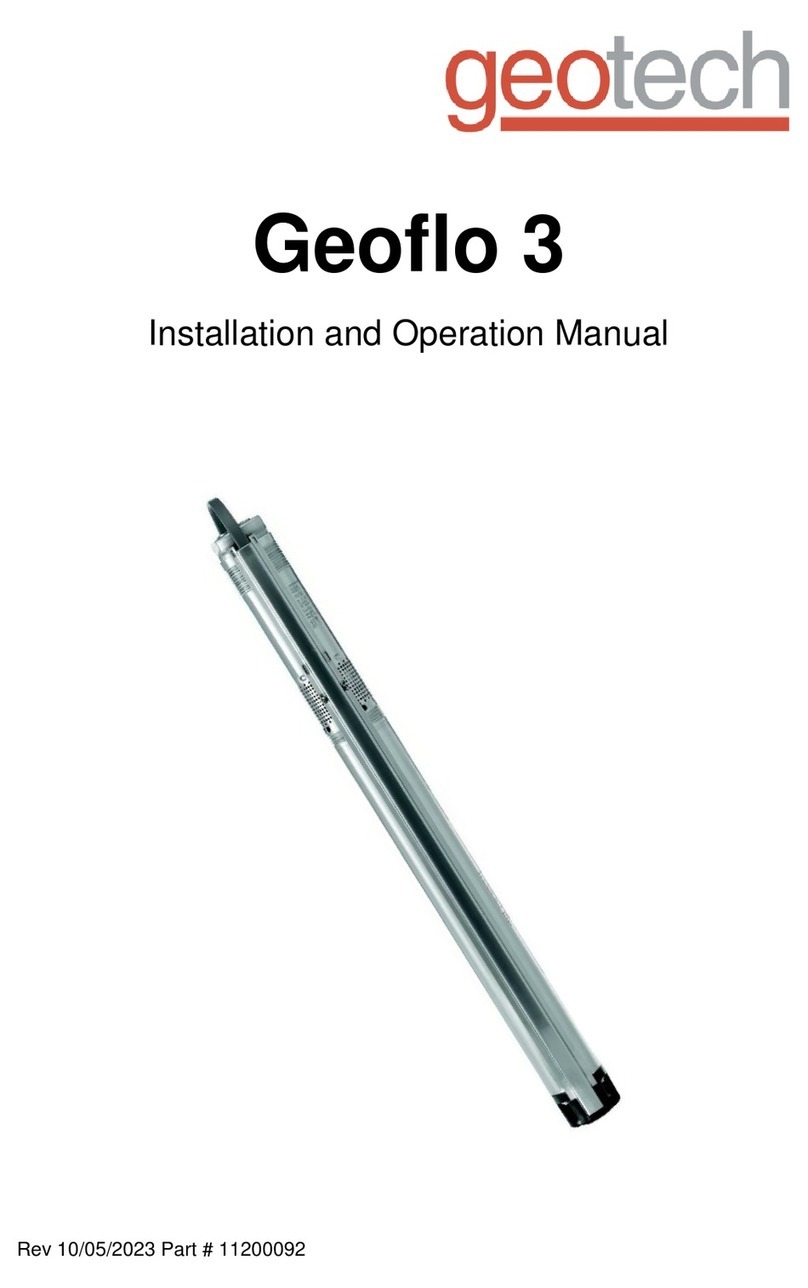
Geotech
Geotech Geoflo 3 User manual
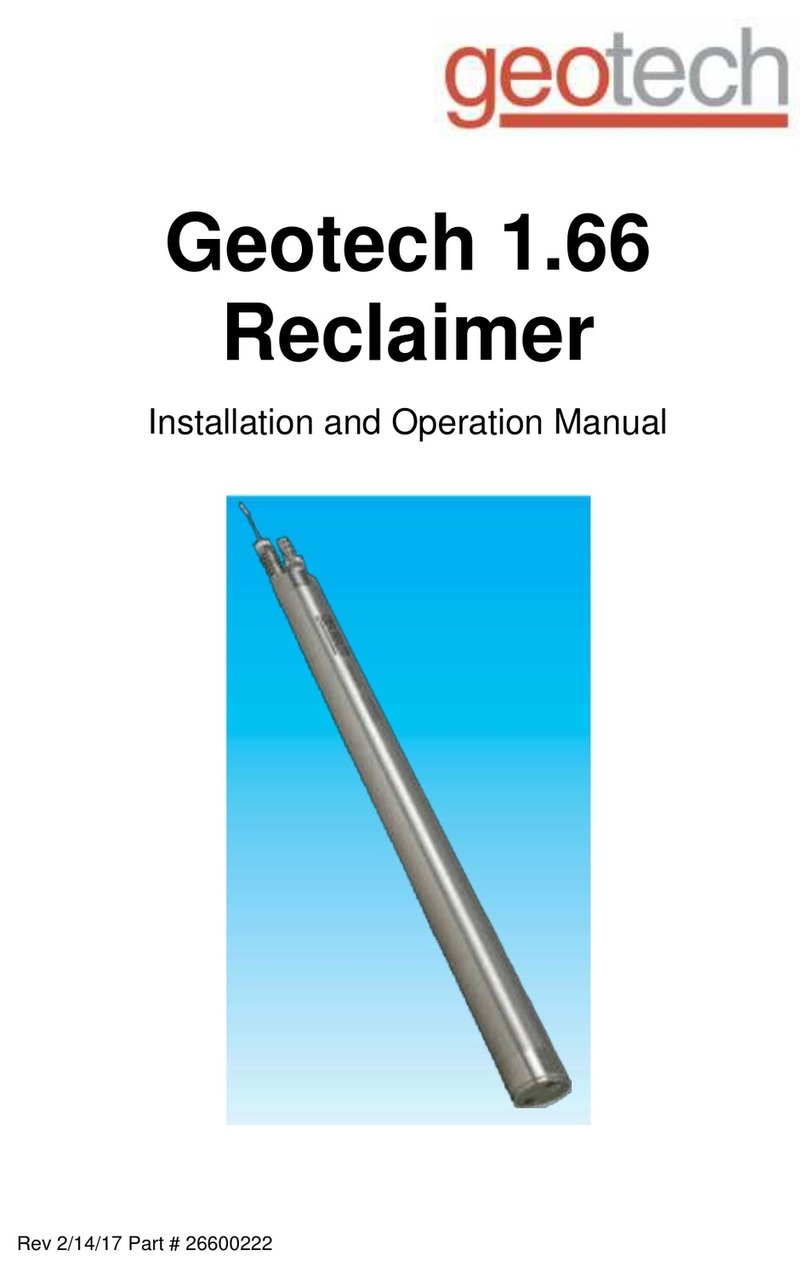
Geotech
Geotech 1.66 Reclaimer User manual
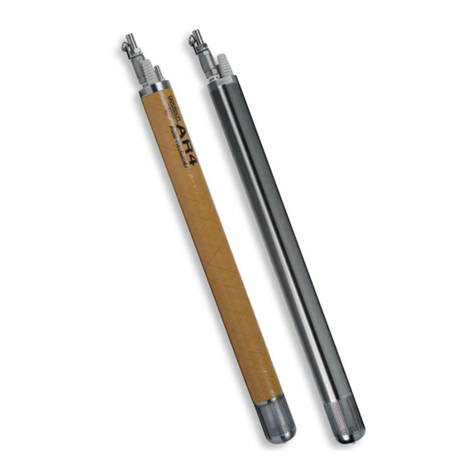
Geotech
Geotech AR4 Series User manual

Geotech
Geotech Geopump I Series User manual
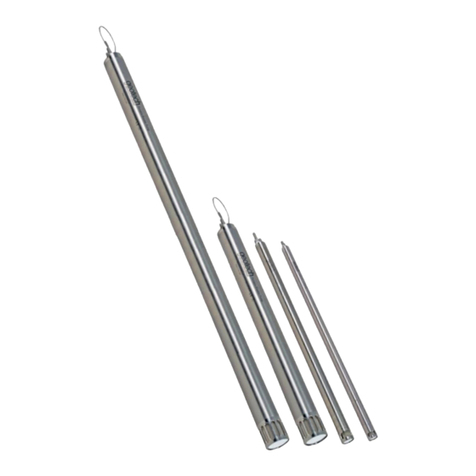
Geotech
Geotech 1.66x36 User manual
